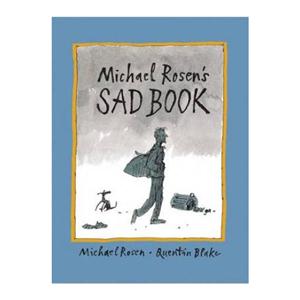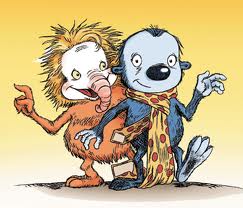Thursday 6th March is “World Book Day”. In fact, it’s not World Book Day – it’s UK World Book Day. The rest of the world celebrates on the 23rd April. In Britain, the earlier date was chosen to avoid Easter school holidays.
We have long advocated the importance of reading, and wrote about the love of reading in a previous post in March last year.
https://3diassociates.wordpress.com/2013/03/07/a-celebration-of-reading/
Here’s a short quote from this post.
“Books open minds and open worlds that aren’t necessarily available to us in our immediate environments. Books can transform our thoughts, excite our imagination, inspire us, challenge us, lift our spirits and enlighten us. Books and reading can inform us, enable us, comfort us and engage us.”
Books have another valuable purpose.
In life, we sometimes need to face challenging times – bereavement, grief, relationship breakdowns, and prejudice. Our children aren’t exempt from these problems and difficulties. A book can be used to tackle a range of sensitive issues, easing the child into the familiar territory of listening to a story whilst simultaneously providing an avenue to discuss concerns that are particularly pertinent to them. What books can do is illustrate to a child that they’re not alone – that other people have felt the same emotions and feelings that they feel. Books enable and demonstrate empathy.
Books provide the reader and/or the listener with an objective perspective by telling a story that might resonate but isn’t as direct as asking a child to explain their problems or feelings, or questioning them about a problem that might have happened. They can be used as a distancing technique; to propose an idea that then enables the child to talk about issues that might be bothering them – if that is what they want to do.
Books can also be used to instil values for a virtuous way of living. A clear, positive moral and ethical message that some books reveal are a great source for discussion. As adults, we read books and connect with the characters. We recognise the flaws of the foolish and the goodness of the great. Through reading, children too can distinguish for themselves various positive values from the characters and situations within a book, thus contributing to the development of their own moral framework.
There are so many wonderful books about that it’s almost impossible to consider a top-ten list of books to read with children, since this would be wholly unfair on the authors who’ve accidentally been omitted from such a list. However, as a starting point – with further additions by readers, we hope – we’d like to start with a few recommendations for books that we’ve enjoyed sharing with our own children and grandchildren as well as the young people that we’ve taught.
We want to reiterate one thing very clearly. The books in this list are great books; thoughtfully written for the purpose of engaging young people in reading and instilling a love of reading. That is why they are great books and that is their main purpose. Although all of the books tackle some extremely sensitive issues, they should be read first and foremost as the good books they are – to enjoy and share with children. They shouldn’t be deconstructed to the point of losing their value as a complete entity or artifact of creativity and thoughtfulness. We need to take care not to kill the pleasure and enjoyment of reading experiences with a relentless and inevitable follow-through of picking out what we consider ‘messages’ or ‘topics’.
Over the next few days we’ll be adding to this list. Please do add your suggestions too.
………………………………………..
“Noughts and Crosses” – Malorie Blackman
“People are people. We’ll always find a way to mess up, doesn’t matter who’s in charge.”
This is a superb book about a dystopia of racial disharmony – with a twist and reversal of “fortune” with the pale-skinned population oppressed by darker-skinned leaders. It’s about family loyalty and first-time relationships. It tackles suicide, prejudice, dark and destructive emotions and the effects of these on oneself and the people that are loved by the characters. A worthy read for adults and young adults as well as children.
“A Huge Bag of Worries” – Virginia Ironside
“There’s nothing a worry hates more than being seen. If you have any worries, however small, the secret is to let them out, slowly, one by one, and show them to someone else.”
This is a book that can be shared with very young people but can also be a useful starting point for a discussion about growing up with older children too.
As young Jenny grows up, she collects more concerns and worries. For her, it feels as though this has amassed into a bag of worries that follow her everywhere she goes. Her concerns are personal but she also worries about the state of the world too. Although she tries to confront her worries by sharing them with other people, she realises that other people have worries of their own without having to deal with hers too. Eventually help is at hand from an unexpected source.
“A Kiss Like This” – Laurence and Catherine Anholt
The story tells of a loving relationship between a lion and his cub. They share kisses, tickles and cuddles, clearly showing a close bond. The contented lion cub then takes a walk through the jungle, meeting various animals who, like his father, also find him very cute. They too kiss, cuddle and tickle the cub, and he enjoys the attention . . . until a “snippy, snappy” crocodile tries to do the same. Uncomfortable with this, the lion cub is frightened. Fortunately, his father has been watching. He scares the crocodile away. Then he tells his son that kisses and cuddles are fine from parrots, if you’re a baby parrot. They’re even fine from a crocodile if you’re a baby crocodile.
If a teacher or a parent wants to explain the importance of being safe from inappropriate touches then this is an excellent way to do it. Sharing a picture book is comforting, and can reiterate an important point without being explicit and abrupt. This book can act as an impetus for further discussions in an environment where the child feels safe.
“Why?” – Nikolai Popov
Some books, of course, have no words. This is a picture book about how unnecessary wars escalate into total disaster. A small territorial dispute between two animals in an idyllic setting ends up with carnage. Nothing has been achieved through prolonged arguments and assaults. At no point had either party sat down and discussed the initial problem. The outcome – destruction.
This book can be used to consider personal disputes as well as consider the impact of war.
“Michael Rosen’s Sad Book” – Michael Rosen
“Sad is anywhere. It comes along and finds you.”
This is a beautifully poignant book that gets to the heart of the inexplicable effects and circumstance of grief and sadness. It’s a deeply personal account of the author’s experiences, including the loss of his son. It explains how sadness can come at the most inopportune moments and how we can sometimes disguise our sadness, even when we look as though we are thoroughly enjoying ourselves.
Although this book is particularly pertinent in times of bereavement, it has a wider purpose of explaining to all readers that it’s not possible to be happy all of the time, and that is fine.
“Wilfrid Gordon McDonald Partridge” – Mem Fox
“What’s a memory?” asked Wilfred. “It’s something you remember” ……. “Something warm, my child”……. “Something from long ago”……….. “Something that makes you cry, my boy”…….. “Something that makes you laugh”……. “Something as precious as gold”.
http://www.youtube.com/watch?v=usnOEnTXabw
What’s a memory? This book looks at how we remember, as the young Wilfrid helps his neighbour to regain her memory. It also illustrates the importance of relationships between generations and how our greatest memories are often triggered by the simplest of things. It makes us think about what is important to us – and it turns out that it’s not material assets or a wealth of knowledge. It’s about our feelings for other people, for the connection with the past and present, for our interaction with nature and the use of our senses.
“Two Weeks with the Queen” – Maurice Gleitzman
“Dear Your Majesty the Queen,
I need to speak to you urgently about my brother Luke. He’s got cancer and the doctors in Australia are being really slack. If I could borrow your top doctor for a few days I know he/she would fix things up in no time. Of course Mum and Dad would pay his/her fares even if it meant selling the car or getting a loan.”
This is the story of young boy whose brother is terminally ill. Trying to protect him from the horrors of watching his sibling die, Colin is sent to Britain to live with his aunt, whereupon he goes in search of a doctor who can make his brother well. Whilst searching the main hospitals in London, he strikes an unusual friendship with a man whose partner is also dying of HIV related illnesses.
It’s a striking story that considers the importance of friendship. It’s a story that explains the problem with hopefulness and hopelessness, acknowledging that there are dichotomies and contradictions in life.
“Kensuke’s Kingdom” – Michael Morpurgo
“Life must not be spent always hoping, always waiting. Life is for living.”
A young boy, Michael, is washed up on a deserted island having fallen from his parents’ yacht (which was bought after his father was made redundant). Soon he realises that the island isn’t deserted but inhabited by Kensuke – an old Japanese hermit who seemingly has nothing in common with this young boy, other than their shared space on the island. Together, they learn from one another as we learn about the humanity of friendship through the telling of their story.
“Something Else” – Kathryn Cave
A strange looking creature tries to befriend a group of other people playing. However, they avoid “Something Strange” because he looks so different. Despondent, the little character wanders back to his home and sits alone. When there’s a knock at the door, he’s immediately excited but then another “strange” looking character comes in asking to play with him. “Something Strange” behaves appallingly – ignoring this weird creature in exactly the same way he’d been ostracised previously. Eventually, the two characters find some similarities and appreciate their differences.
A simple but effective story in recognising that we are all unique and even our differences can be complementary.
“For Every Child” – various authors – foreword by Archbishop Desmond Tutu
“ We each can make a difference if we are vigilant to create a new kind of society, more compassionate, more caring, more sharing where human rights, where children’s rights are respected and protected.” – Desmond Tutu
http://www.youtube.com/watch?v=Mmy9MpwyKnQ
Every child should read this book. Every school should have a copy and every child should know their rights under this convention of the Rights of the Child that has been globally signed.
It’s beautifully illustrated by artists known for their work with children’s literature. It also contains the articles from the UN Convention on the Rights of the Child.
………………………….
Footnote
We have found the website “Good Reads” extremely useful for both adult and children’s literature. The link below provides some suggestions for books for your children to read (or for you to read with your children). Scroll down the linked page to find age-related reads.
https://www.goodreads.com/book/show/6936332-1001-children-s-books-you-must-read-before-you-grow-up












